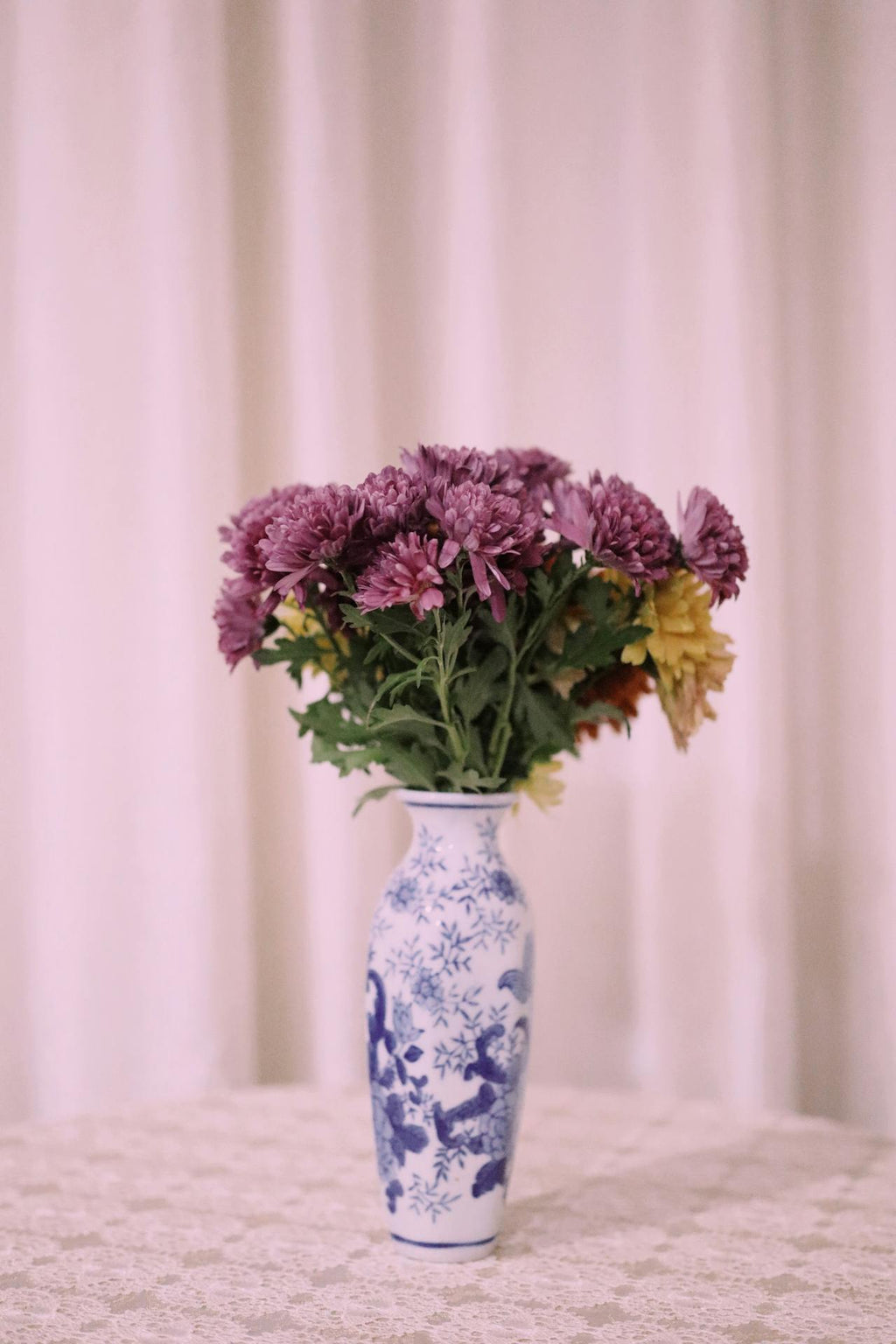Ming Dynasty vases (1368–1644 CE) are among the most celebrated artifacts in Chinese art history, renowned for their exquisite craftsmanship, innovative designs, and cultural significance. Produced during a period of economic prosperity and artistic innovation, these vases reflect the technological advancements and aesthetic sensibilities of the Ming era. This guide provides an in-depth exploration of Ming Dynasty vases, covering their historical context, production techniques, styles, identification methods, and collecting considerations.
Historical Context
The Ming Dynasty marked a golden age for Chinese ceramics, particularly porcelain, which became a global symbol of Chinese artistry. The imperial kilns at Jingdezhen in Jiangxi Province were the epicenter of production, creating vases for the imperial court, domestic use, and export. The dynasty’s stability and trade expansion, especially via the Maritime Silk Road, spread Ming porcelain across Asia, Europe, and the Middle East, influencing global ceramic traditions.
Key periods within the Ming Dynasty include:
- Early Ming (1368–1435): Hongwu, Yongle, and Xuande reigns; focus on bold, simple designs and underglaze blue.
- Middle Ming (1436–1566): Chenghua, Hongzhi, and Zhengde reigns; refined techniques and delicate motifs.
- Late Ming (1567–1644): Jiajing, Wanli, and Tianqi/Chongzhen reigns; experimentation with colors and forms.
Production Techniques
Ming vases were primarily made from porcelain, a material perfected in Jingdezhen due to its access to high-quality kaolin clay. The production process involved several stages:
- Clay Preparation: Kaolin and petuntse were mixed to create a fine, workable clay body.
- Shaping: Vases were wheel-thrown or mold-formed, with shapes like meiping (plum vases), yuhuchunping (pear-shaped bottles), and hu (jar-shaped vessels).
-
Decoration: Techniques included:
- Underglaze Blue: Cobalt oxide was painted onto the biscuit-fired body, then covered with a transparent glaze and fired at high temperatures (around 1300°C).
- Overglaze Enamels: Polychrome designs (doucai and wucai) involved low-temperature firing to add vibrant colors like red, green, and yellow.
- Monochrome Glazes: Single-color glazes, such as celadon or sacrificial red, were prized for their purity.
- Firing: Kilns were wood-fired, with precise control to achieve desired glaze effects. Dragon kilns allowed mass production, while imperial kilns used smaller, controlled settings for high-quality pieces.
Iconic Styles and Motifs
Ming vases are distinguished by their shapes, glazes, and decorative motifs, which varied by reign and purpose:
- Blue-and-White Porcelain: The hallmark of Ming ceramics, featuring cobalt-blue designs under a clear glaze. Common motifs included dragons, phoenixes, lotus scrolls, and landscapes. Xuande (1426–1435) blue-and-white vases are particularly prized for their vivid cobalt and balanced compositions.
- Doucai (“Contrasting Colors”): Developed during the Chenghua reign (1465–1487), this technique combined underglaze blue outlines with overglaze enamel colors, creating delicate and intricate designs.
- Wucai (“Five Colors”): Prominent in the Jiajing and Wanli reigns, wucai used bold polychrome enamels, often with mythical creatures or narrative scenes.
- Monochrome Vases: Imperial monochrome glazes, like copper-red (sang de boeuf) or imperial yellow, were reserved for court use, symbolizing power and prestige.
-
Shapes: Iconic forms included:
- Meiping: Tall, slender vases for displaying plum blossoms.
- Yuhuchunping: Elegant, pear-shaped bottles with flaring rims.
- Gu: Beaker-shaped vases with flared mouths, often used ceremonially.
Identification and Authentication
Authenticating Ming Dynasty vases requires expertise due to the prevalence of reproductions. Key factors to consider:
- Reign Marks: Many imperial vases bear six-character reign marks (e.g., “Da Ming Xuande Nian Zhi” for “Made in the Xuande reign of the Great Ming”). However, marks alone are not definitive, as later copies often mimicked them.
- Material and Glaze: Genuine Ming porcelain has a fine, white body with a smooth, glossy glaze. Look for natural imperfections like “orange peel” texture or tiny glaze bubbles.
- Cobalt Quality: Early Ming blue-and-white vases show “heaping and piling” (darker blue spots due to cobalt concentration), a sign of authenticity.
- Craftsmanship: Examine the precision of painted motifs and the quality of shaping. Imperial pieces exhibit superior artistry compared to export wares.
- Provenance: Documented history or archaeological context strengthens authenticity. Be wary of pieces lacking clear provenance.
- Scientific Testing: Thermoluminescence (TL) testing can estimate age, though it’s expensive and not foolproof.
Common reproductions include Qing Dynasty copies and modern fakes. Qing imitations often have sharper, less fluid designs, while modern fakes may use artificial aging techniques.
Collecting Ming Vases
Collecting Ming vases requires knowledge, caution, and appreciation for their historical value. Considerations include:
- Condition: Chips, cracks, or repairs significantly reduce value. Pristine examples command premium prices.
- Rarity: Imperial pieces, especially from Xuande or Chenghua reigns, are rare and highly sought after. Export wares are more common but still valuable.
- Market Trends: Auction houses like Sotheby’s and Christie’s regularly feature Ming vases, with prices ranging from thousands to millions of USD. For example, a Xuande blue-and-white “dragon” vase sold for $21.6 million in 2016.
- Care and Preservation: Store vases in stable environments (avoid extreme temperature or humidity). Use padded stands to prevent tipping.
- Ethical Considerations: Ensure vases are legally acquired, as looting and illicit trade are concerns in the antiquities market.
Cultural Significance
Ming vases were more than decorative objects; they embodied Confucian ideals, imperial authority, and cultural exchange. Dragons symbolized imperial power, while floral motifs reflected harmony with nature. Export vases, tailored for foreign markets like the Middle East or Europe, often featured Islamic-inspired designs or European shapes, showcasing Ming adaptability.
Conclusion
Ming Dynasty vases are timeless masterpieces that blend technical prowess with artistic expression. Whether you’re a collector, scholar, or enthusiast, understanding their history, craftsmanship, and authenticity is key to appreciating their value. By studying their styles and context, one can connect with a vibrant chapter of Chinese cultural heritage that continues to captivate the world.
Further Reading
- “Ming Porcelain” by Daisy Lion-Goldschmidt
- “The Art of the Chinese Potter” by R.L. Hobson
- Auction catalogs from Sotheby’s, Christie’s, and Bonhams
- Visit museums like the Palace Museum (Beijing), Metropolitan Museum of Art (New York), or British Museum (London) for exemplary collections.



